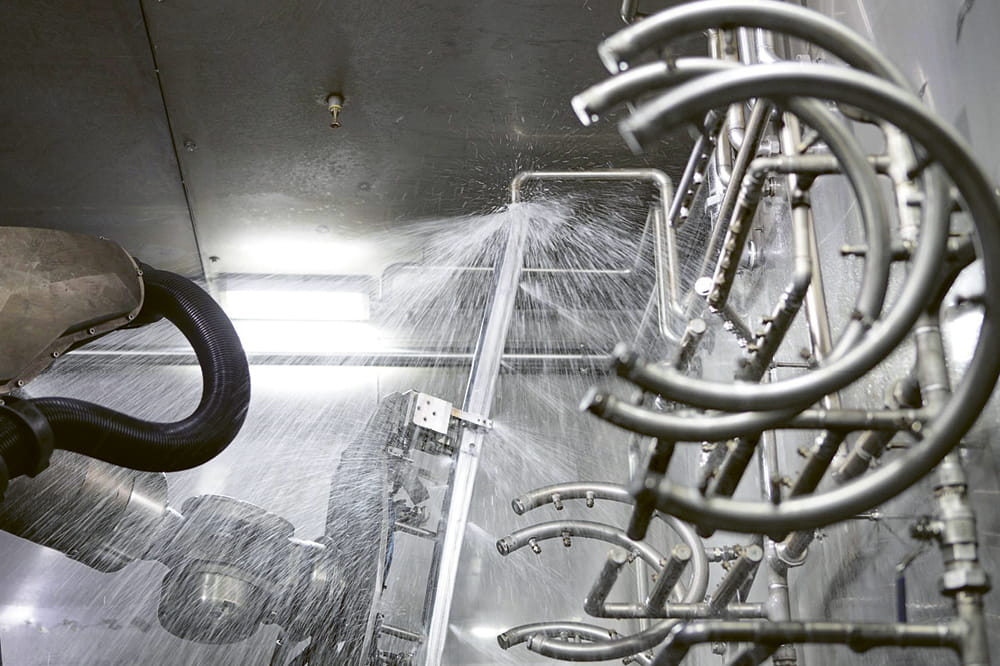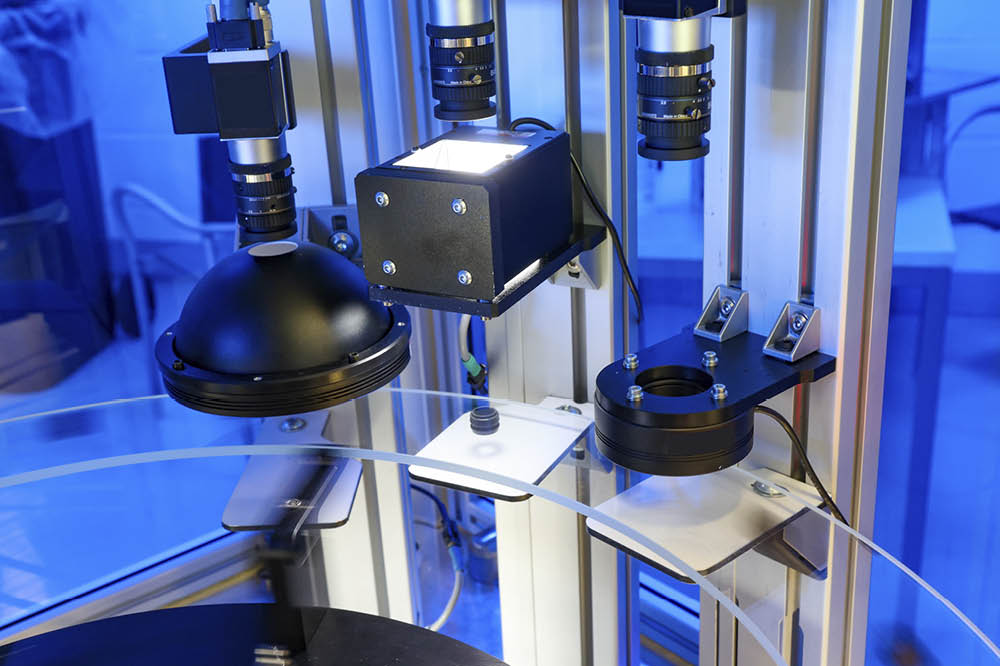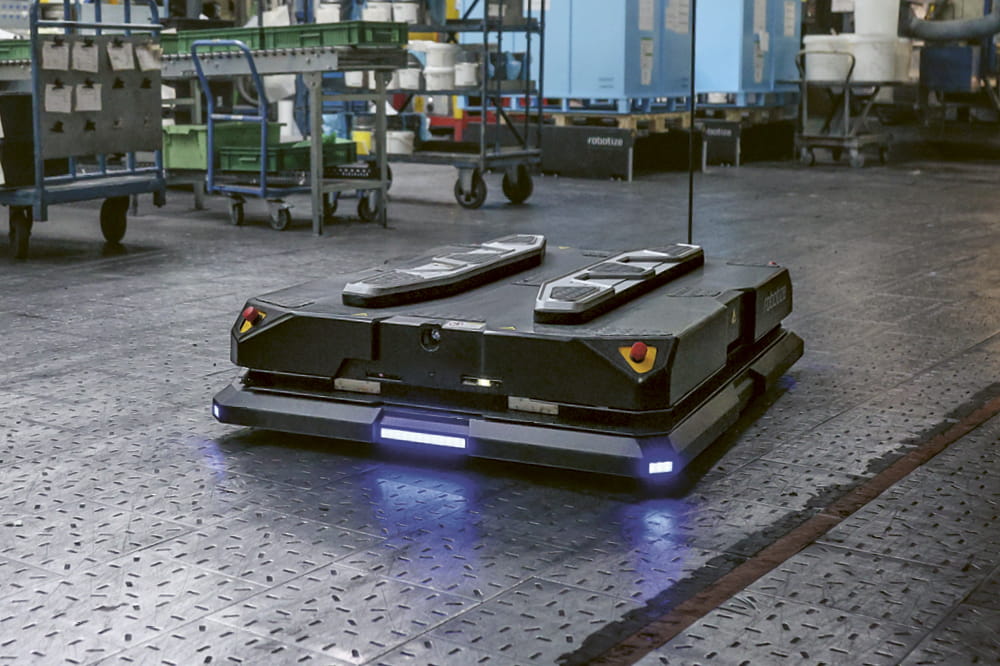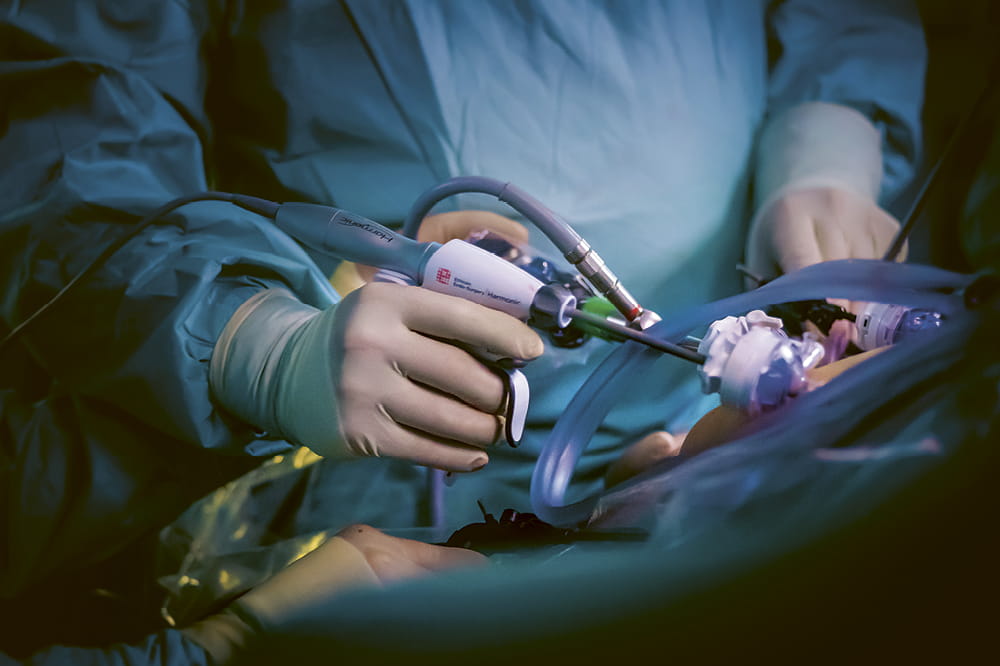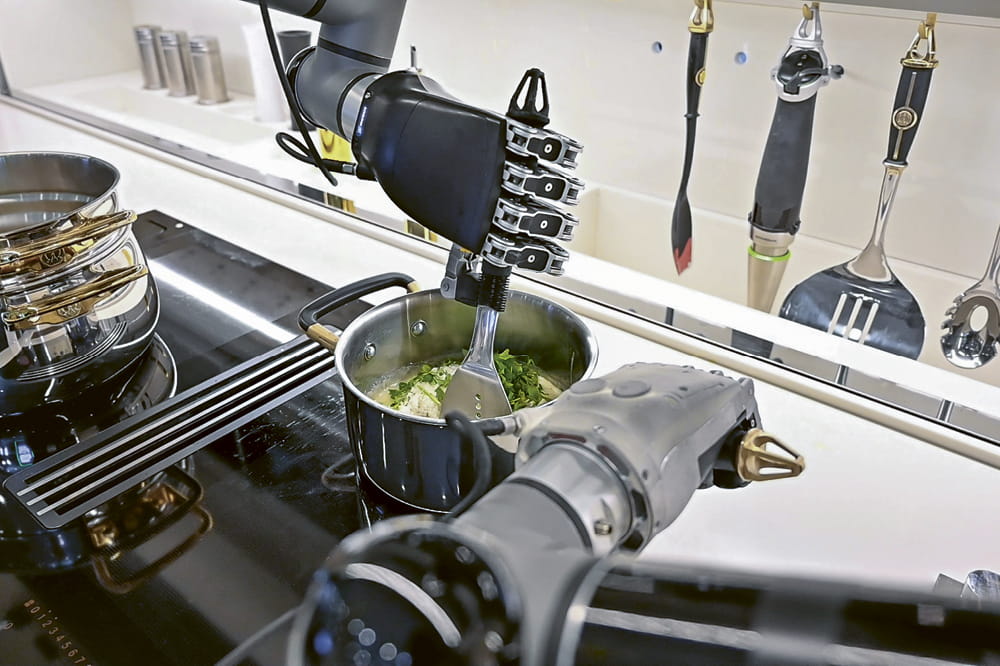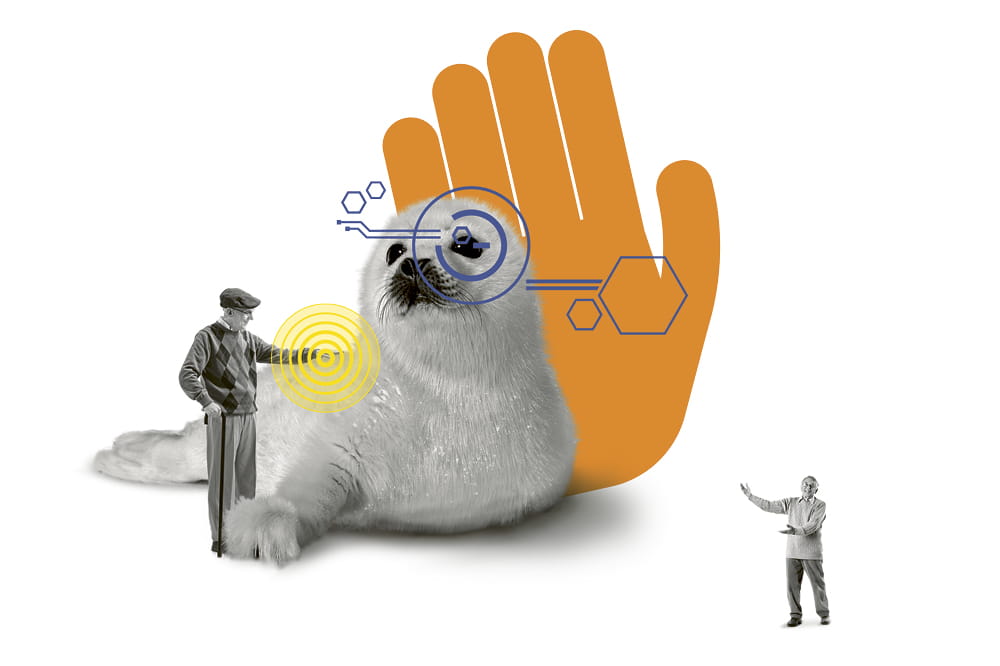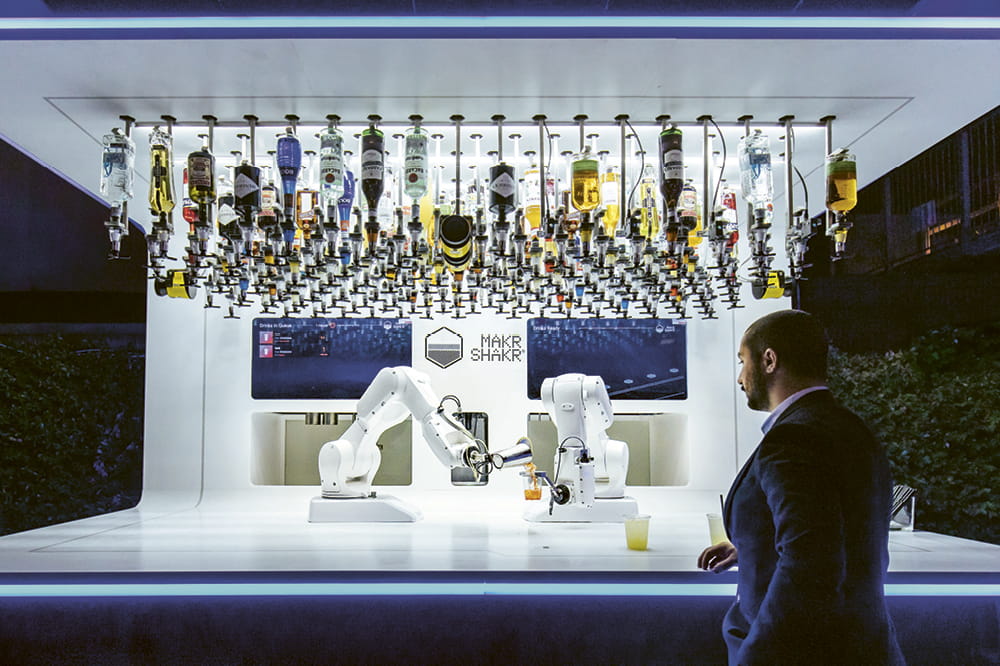Obtain news and background information about sealing technology, get in touch with innovative products – subscribe to the free e-mail newsletter.

Not a Single Drop of Oil
First on the shop floor, now in the kitchen, a cold storage unit or a hospital as well: The new locations where robots work have had a real impact on the requirements for them, including seal specifications.
Water spurts out of pipes. Spray flies in all directions. In the middle of it all, a robotic arm holds a single metallic part in its gripper. The part is being cleaned. That’s how a film promoting a robot manufacturer begins. “Robots were traditionally found on the shop floor,” said Timo Furrer, Vice President Global Sales at Freudenberg Sealing Technologies, commenting on the video clip. “In those cases, the same basic requirements were always in force, 25°C [77°F], standardized movements.” But industrial robots now work in cold storage units and washing cells. This changes the requirements for them.
Furrer keeps an eye on many segments and industries. “The market for robots is booming,” he said. Automation is expanding and conquering new fields. And robots need seals. Dirt or water cannot be allowed to enter their highly sensitive gearboxes. “More and more robots work in an environment filled with dirt, dust or water,” Furrer said. Seals are needed because every robot gearbox is filled with a lubricant in the form of grease or oil. Every effort must be made to keep the lubricant from escaping. “Years ago, the leakage might have been tolerated in some industries,” he said. “Today the quality requirements have increased considerably.”
Motivation and a Challenge
Achim Ströhle has made the same assessment. He is the Global Segment Director Industrial Machines & Robotics at Freudenberg Sealing Technologies. A while ago, Ströhle noted that some customers considered minor leakage in grease-lubricated housings to be a given. “We first became aware of how widespread it was when we were at a trade fair with some international teams and we queried very different manufacturers on the subject.” The notion was that a little grease now and then was just how things worked. After all, seals are imperfect. Ströhle and his team saw the problem as a challenge, especially with regard to the robotics market, and it motivated them.
The bottom line was that the leakage of grease or oil is unacceptable if a robot is working in an operating room or the food industry. “Nobody wants a pizza with salami and motor oil on it,” Furrer said. But many service robots and their hardware are based on industrial-robot models. Much as an automaker doesn’t know whether a customer drives its cars in Alaska or Dubai – whether it must be equipped to withstand cold temperatures or fine desert sand – a robot manufacturer doesn’t necessarily know where its models are going to be used. The result: the demands on robot components are increasing across the board.
People don’t want their pizza with salami and motor oil on it.
“That naturally gives us an edge because our focus is on seals that meet especially high demands for quality anyway,” Furrer said. It takes little special expertise to seal vacuum robots against normal household dust. Challenges arise where a number of requirements run into one another: “For example, when a seal must withstand higher stresses when it is supposed to meet the hygienic standards of the U.S. Food and Drug Administration (FDA) at the same time,” Furrer said. Or when the material is simultaneously exposed to water and extreme temperatures. In most cases, combined expertise in materials and applications is required. “We have the materials and the technology to solve this.”
Operating life is another issue. Especially for automated processes, it is crucial for individual components to function for years if at all possible. “Every breakdown, every repair costs a lot of money if an entire installation comes to a stop,” Ströhle said. He is proud of the progress that Freudenberg Sealing Technologies has made in meeting the desires of these customers – among other products, it has developed a seal that guarantees complete leak-free operation in oil-lubricated gearboxes.
A Glass of Water or a Cup of Coffee…
Freudenberg Sealing Technologies still mainly supplies major industrial customers – but Furrer and his team have long kept an eye on the startups of the robotics scene. “There are a lot of them springing up right now, and any of them could become the next big thing,” Furrer said. Many of these new companies focus on – and have special expertise in – IT, artificial intelligence and improved user-friendliness, and still source their hardware from the major suppliers. But not all of them. “The manufacturers that come from the IT world, in particular, do not always have the importance of seals on their radar right away,” Furrer said. “What happens, for example, when a user inadvertently spills a glass of water or a cup of hot coffee on the robot?”
“Robotics Is Still a Trend”
There is a great deal of movement in the market in every direction. One of its characteristics is that some projects do not achieve success as quickly as first assumed. Furrer recalls one example: Softbank. The Japanese robot manufacturer turned away from the strategy of developing humanoid robots and put its efforts into simpler applications such as cleaning robots. “Robotics is still a trend,” Furrer said. “There will still be surprising developments, but no one in the industry at this point knows which of them will be successful.” Whatever happens, more robots will have to be sealed against dirt and water in the future – and they will need to stay leak-tight. Freudenberg Sealing Technologies knows how that works.
This article originally appeared in ESSENTIAL, Freudenberg Sealing Technologies’ corporate magazine that covers trends, industries and new ideas. To read more stories like this, click here.
More Stories About Digitalization

